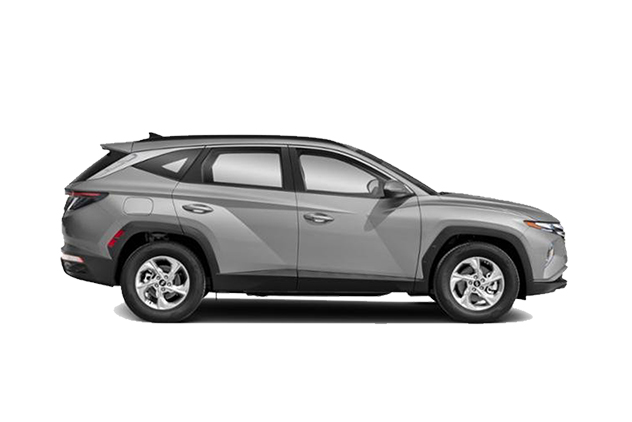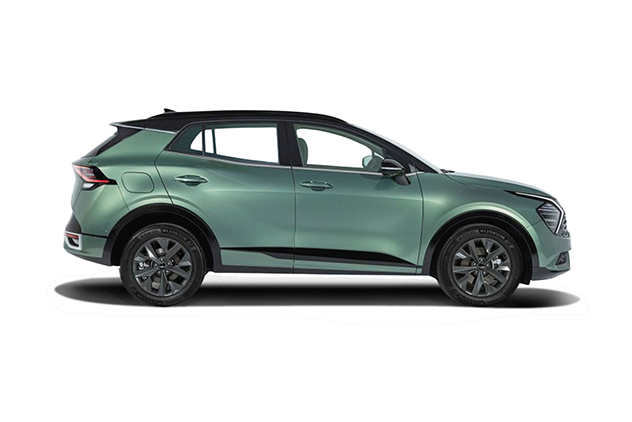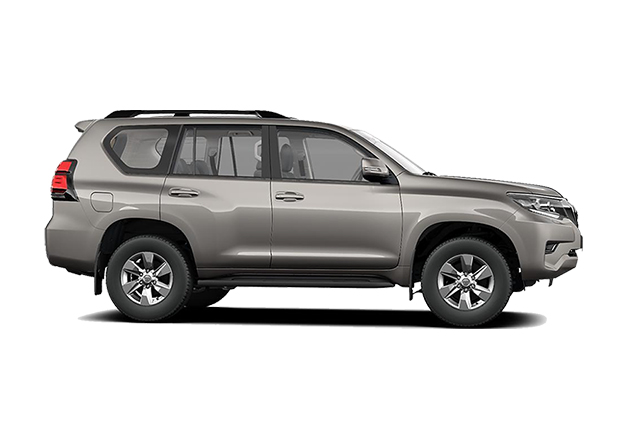March in Iceland is a month of contrasts. Winter still holds the landscape in ice and snow, but spring is quietly returning: the days stretch longer, storms grow less severe than mid-winter, and the northern lights still dance on clear nights. With thinner crowds and shoulder-season prices, March gives you a taste of winter magic without the peak-season bustle.
For travelers, it’s a rewarding time to visit: ice caves are (often) still open, glaciers are at their most dramatic, geothermal pools feel extra cozy in the crisp air, and there’s enough daylight to pack in full sightseeing days. With smart planning and the right vehicle, a March self-drive is both manageable and memorable.
- Related links: Iceland in February Guide ; Best Ice Caves in Iceland
Table of Contents
- Iceland Weather in March
- What to Pack for Iceland in March
- Driving Conditions in Iceland in March
- The Best Rental Car for Iceland in March
- Is March a Good Time To Go to Iceland?
- Best Things to Do in Iceland in March
- Best Festivals and Events in Iceland in March
- Self-Drive Itinerary for March
- What Does Iceland in March Look Like?
- Frequently Asked Questions
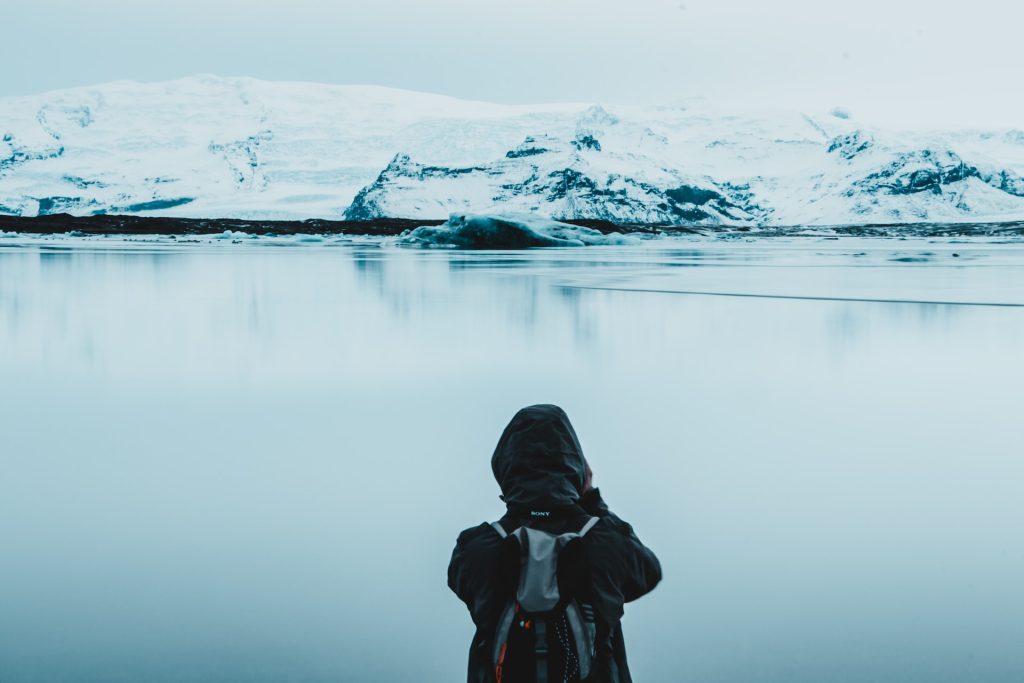
Iceland Weather in March
March is technically the start of spring, but it feels like winter in most of Iceland. Expect a mix of snow, sleet, rain, and bright blue breaks between passing systems. Winds can be strong (as always here), yet conditions are generally milder than in January–February.
The Average Temperature of Iceland in March
Typical temperatures in Iceland fall between –2°C and 3°C (28°F–38°F). The south coast and Reykjavík are often a touch warmer; the north, Eastfjords, and higher ground are colder and snowier.
The Daylight Hours
Daylight is one of March’s big wins: roughly 10 hours at the start of the month, growing to ~13 hours by the end. That means you can enjoy real sightseeing time by day, and still have long, dark evenings for aurora hunting.
Is Iceland Cold in March?
Yes, this is still a winter month. Roads and trails can be icy, and wind chill makes it feel colder. With proper layers and a weather-aware plan, you can explore comfortably; many travelers find March a sweet spot between deep winter and spring thaw.
What to Pack for Iceland in March
Here are some of the most important things to remember to pack when visiting Iceland in March.
- Waterproof Jacket
- Thick Socks
- Waterproof Hiking Boots
- Thick Sweater
- Thick insulated Pants
- Scarf
- Hat
- Wool Underwear/Thermals
- Gloves
- Sunscreen
- Lip Balm
- Down Coat
- Sunglasses
- Bathing Suit
- Reusable Water Bottle
- Backpack
For a season-by-season checklist, see our full Iceland packing list.
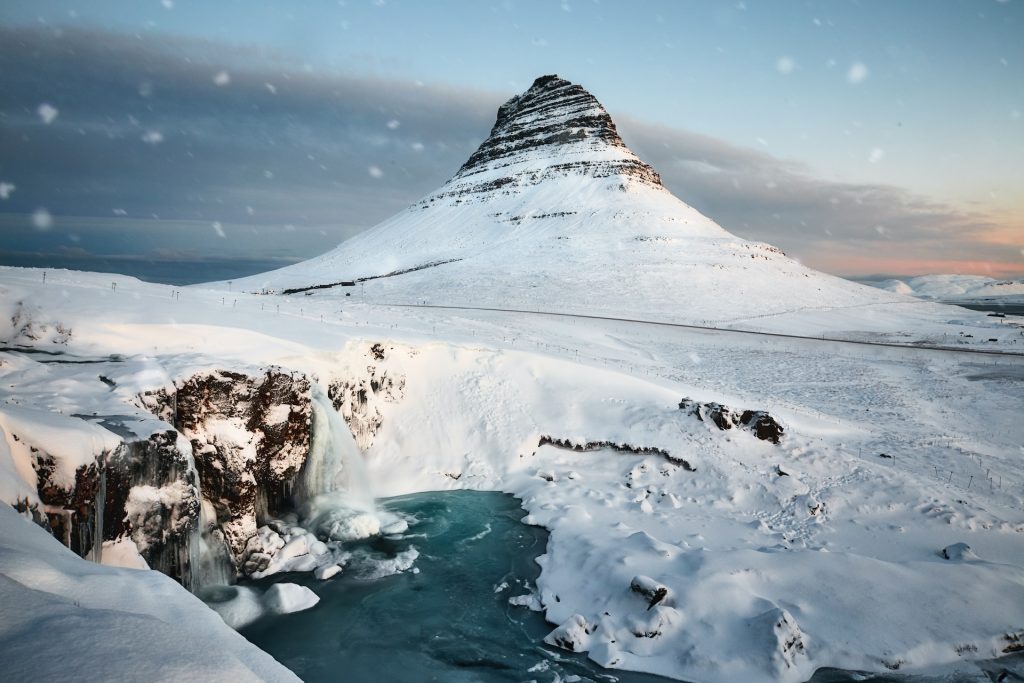
Driving Conditions in Iceland in March
Driving in March means navigating the final stretch of winter conditions. The main roads, including the Golden Circle and large sections of the Ring Road, are usually kept clear and drivable, but snow, ice, and high winds remain common, especially outside the south and west. In the north, east, and Westfjords, expect more challenging conditions, with icy surfaces and occasional closures after heavy snowfall.
The Highlands and all F-roads are completely closed until summer. South Coast and Snæfellsnes trips are the most reliable for self-drivers in March, as these regions are generally well maintained, but even here it’s important to drive cautiously after snow or rainfall.
Always check road.is for live updates and vedur.is for forecasts, and remember that conditions can change quickly in a single day. March driving is absolutely doable, but it requires a sturdy 4×4, patience, and flexibility in case your plans need adjusting to weather.
The Best Rental Car for Iceland in March
The best rental car for a trip to Iceland in March is a 4WD car that is built for the elements and can withstand the weather and road conditions that come with the winter months. Regardless of where you plan to go, you can trust that a 4X4 vehicle will provide good handling to ensure your groups’ safety while driving your chosen route.
When selecting a 4WD to rent, you should also consider the size of your group, and the amount of luggage you will be carrying on your trip. You can then decide whether you want an economy or compact car which fits only a few people or a mid-size to full-size car which can hold more people (up to 5 or 6) and luggage.
Is March a Good Time To Go to Iceland?
Despite being one of the colder months, March is a great time to visit Iceland. Firstly, it is perfectly placed between the cold winter months and extremely busy summer months without being too far to either extreme. And that means smaller crowds and often better prices than summer.
Secondly, there are tons of exciting winter activities still going on that you can indulge in, like whale watching and glacier ice caving. Thirdly, the shorter days and longer nights mean that you could see the Northern Lights if you get lucky. Finally, it is also a great time to indulge in one of Iceland’s many hot springs and spas.

Best Things to Do in Iceland in March
There are a slew of fun activities to do in Iceland in March that cater to every possible tourist taste, from adventure to relaxation and everything in between. Here are a few of our top recommendations.
1. See the Northern Lights
March is one of the last reliable months to see the northern lights in Iceland before summer’s light takes over. With 10–13 hours of daylight, the nights are still long enough for excellent viewing. Head outside of Reykjavík to darker areas such as Þingvellir National Park, the South Coast, or Jökulsárlón Glacier Lagoon for your best chances. While sightings are never guaranteed, solar activity is usually strong at this time of year, and guided tours can take you to cloud-free skies if conditions in one area look poor.
2. Glacier Hiking
Just as fortune favours the bold, Iceland favours the adventurous. Glacier hiking in Iceland at any point in the country’s winter is a wonderful and rewarding experience for thrill seekers. Since March is technically part of winter season it’s great time to enjoy this activity.
These glaciers cover 11% of Iceland’s landscape and are one of the most popular tourist attractions. From the capital Reykjavik to the Solheimajokull glacier, a tongue of the Myrdalsjokull glacier on the South Coast, there are several tours and hikes that will fascinate you and take your experience of Iceland to the next level.
There are some amazing glacier hiking tours available including the Solheimajokull glacier walk tour and a 10-hour super jeep tour to the Eyjafjallajokull volcano and glacier, which also gives you the opportunity to see the Solheimasandur black sand beach DC plane wreck.
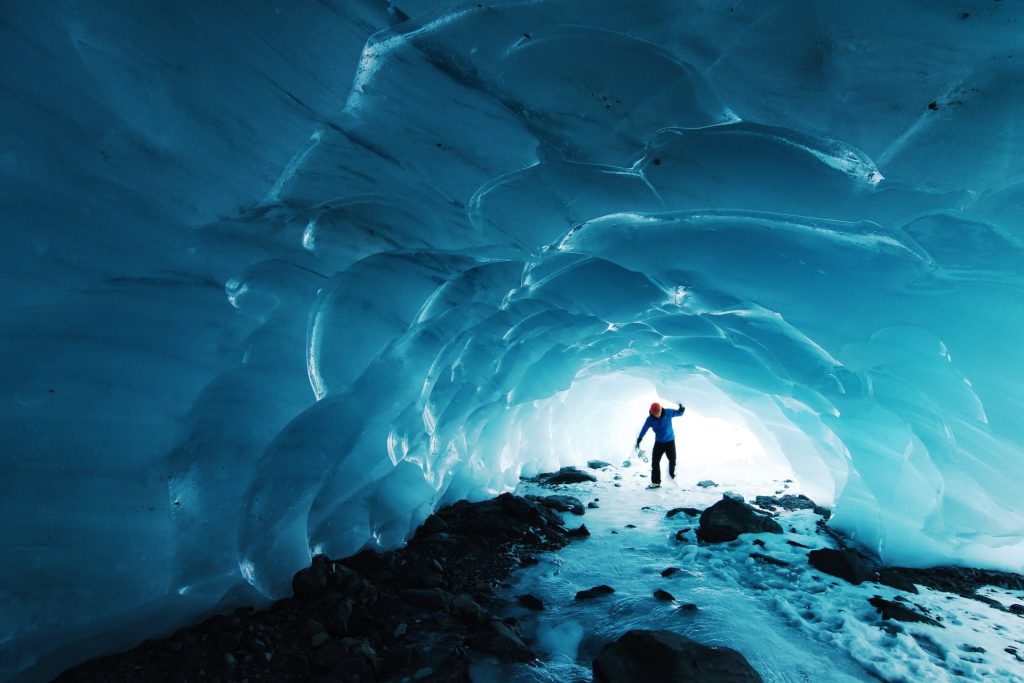
3. Explore Natural Ice Caves
March is prime season for Iceland’s natural blue ice caves, which form anew each winter in glaciers like Vatnajökull and Mýrdalsjökull. These crystalline caverns vanish by late spring, making March one of the last chances to see them before meltwater returns. Tours are guided-only for safety, as conditions inside caves can change rapidly. Walking into a glowing tunnel of frozen sapphire walls is one of Iceland’s most spectacular seasonal experiences and a true bucket-list moment.
4. Soak in Hot Springs and Pools
There’s nothing quite like slipping into a geothermal pool while snowflakes fall or cold winds blow outside. March is a perfect time to enjoy Iceland’s famous hot springs, when the contrast between the icy air and steaming water is at its best. Beyond the iconic Blue Lagoon, you can relax at the seaside Sky Lagoon, the rustic Secret Lagoon, or the geothermal pools at Mývatn in the north. Local swimming pools throughout the country also offer affordable, authentic experiences that Icelanders use daily.
5. Icelandic Horseback Riding
March is one of the last months to see Icelandic horses in their fluffy winter coats. These sturdy, friendly animals are unique to Iceland and famed for their smooth tölt gait. Riding tours are available across the country, from short family-friendly excursions near Reykjavík to longer treks through lava fields or along black-sand beaches. Even if you don’t ride, stopping to admire and photograph these charismatic horses is an essential part of an Iceland trip.
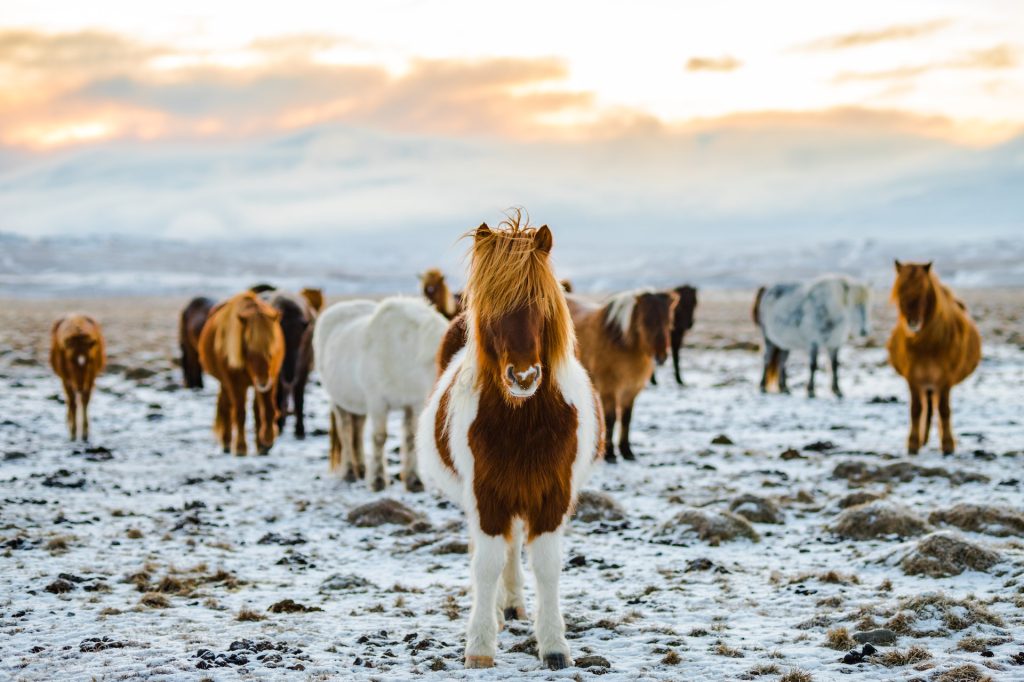
6. Scenic Self-Drives
If a full Ring Road loop feels too ambitious for March, shorter regional routes are ideal. The South Coast delivers a packed itinerary of waterfalls, beaches, and glacier lagoons, all accessible with the right 4×4. The Snæfellsnes Peninsula, often called “Iceland in Miniature,” is another great option with volcanoes, fishing villages, and the famous Kirkjufell mountain. March’s balance of daylight and manageable winter conditions makes self-drives one of the most rewarding ways to explore.
Best Festivals and Events in Iceland in March
In addition to the incredible sights that Iceland offers, visitors can also enjoy the many fun festivals and food-filled activities that are part of Iceland’s culture. Starting from the very first day of March, Iceland promises to deliver fun activities that will keep you entertained and engaged throughout the month.
Beer Day (March 1)
Beer Day marks the end of Iceland’s 74-year prohibition on beer, which lasted until 1989. Unsurprisingly, Icelanders celebrate in style. Bars across Reykjavík and Akureyri host happy hours, local breweries release special batches, and beer tours and tastings pop up throughout the city. For travelers, it’s a lively way to dive into modern Icelandic culture while sampling the rapidly growing craft beer scene.
Food and Fun Festival
The Food and Fun Festival is a culinary festival has become one of Reykjavík’s most exciting annual events. Top chefs from around the world pair up with Icelandic restaurants to create innovative menus using local ingredients, from lamb and seafood to skyr and wild herbs. The week culminates in a friendly but prestigious cooking competition that crowns a winner. For visitors, it’s a chance to taste dishes you won’t find on regular menus and to experience Iceland’s food scene at its most creative.

Músíktilraunir
Músíktilraunir, known locally as “Music Experiments,” is a competition that showcases emerging Icelandic musicians, typically teenagers and young adults. Past participants include now world-famous bands like Of Monsters and Men. Over several nights in Reykjavík, dozens of acts compete for recognition, giving audiences a chance to witness the raw, creative energy that fuels Iceland’s reputation as a musical powerhouse. Even if you don’t know the names yet, you could be seeing the next big thing.
Reykjavík Open
The Reykjavík Open is one of the world’s premier chess tournaments, attracting grandmasters, rising stars, and enthusiasts from around the globe. Held each March, it combines competitive play with cultural events and side tournaments, making Reykjavík a hub of strategy and international camaraderie. Even if you’re not a chess player yourself, the atmosphere is exciting, with opportunities to watch matches, attend lectures, or simply soak up the energy of a city hosting some of the sharpest minds in the game.
Stockfish Film & Industry Festival
Named after Iceland’s strong connection to both cinema and cod, the Stockfish Film and Industry Festival is Reykjavík’s premier winter film event. It showcases cutting-edge international and Icelandic films, from arthouse features to shorts, with screenings, Q&As, and industry workshops. The festival also serves as a hub for film professionals, but movie lovers are equally welcome, with opportunities to see premieres and discover fresh voices in cinema.
(Always check specific dates in the year you visit.)
Suggested 7-Day Self-Drive Itinerary for March
Day 1 – Reykjavík & Sky Lagoon
Arrive and ease in: Hallgrímskirkja views, Harpa waterfront, and an evening soak at Sky Lagoon. Aurora forecast looking good? Head out after dark.
Day 2 – Golden Circle
Explore Þingvellir National Park (rift valley scenery), Geysir, and Gullfoss. Optional Laugarvatn Fontana steam/baths. Overnight Selfoss/Hella.
Day 3 – South Coast Waterfalls & Black Sands
Visit Seljalandsfoss, Gljúfrabúi, Skógafoss, and the Reynisfjara black sand beach (watch sneaker waves). Overnight Vík.
Day 4 – Skaftafell & Jökulsárlón (Glacier Day)
Guided glacier hike in Skaftafell, then Jökulsárlón Glacier Lagoon and Diamond Beach for sunset/aurora if clear. Overnight Höfn or return toward Skaftafell.
Day 5 – Ice Cave Adventure & Eastbound Options
Join a natural ice cave tour (if you didn’t on Day 4). Either push into the Eastfjords (weather/road-dependent) or start an easy return west with stops you missed.
Day 6 – Snæfellsnes Peninsula (if conditions allow)
Drive north to Snæfellsnes: Kirkjufell, Arnarstapi–Hellnar coastal walk, Djúpalónssandur. Overnight Borgarnes/Grundarfjörður or return to Reykjavík.
Day 7 – West Iceland to Reykjavík
Visit Hraunfossar & Barnafoss on your way back. If you stayed in the south instead, finish with Blue Lagoon or Sky Lagoon before departure.
Tip: In March, keep itineraries flexible and prioritize safety. Swap Snæfellsnes for extra South Coast time if a northern system rolls in.
What Does Iceland in March Look Like?
Think snow-rimmed waterfalls, glacier-blue horizons, and long winter twilights that fade into aurora-lit skies. Roads trace black ribbons through white fields; steam lifts from hot pools into crisp air; Icelandic horses graze in woolly coats; fishing towns glow warm against early-evening darkness. It’s winter’s grandeur with spring on the horizon.
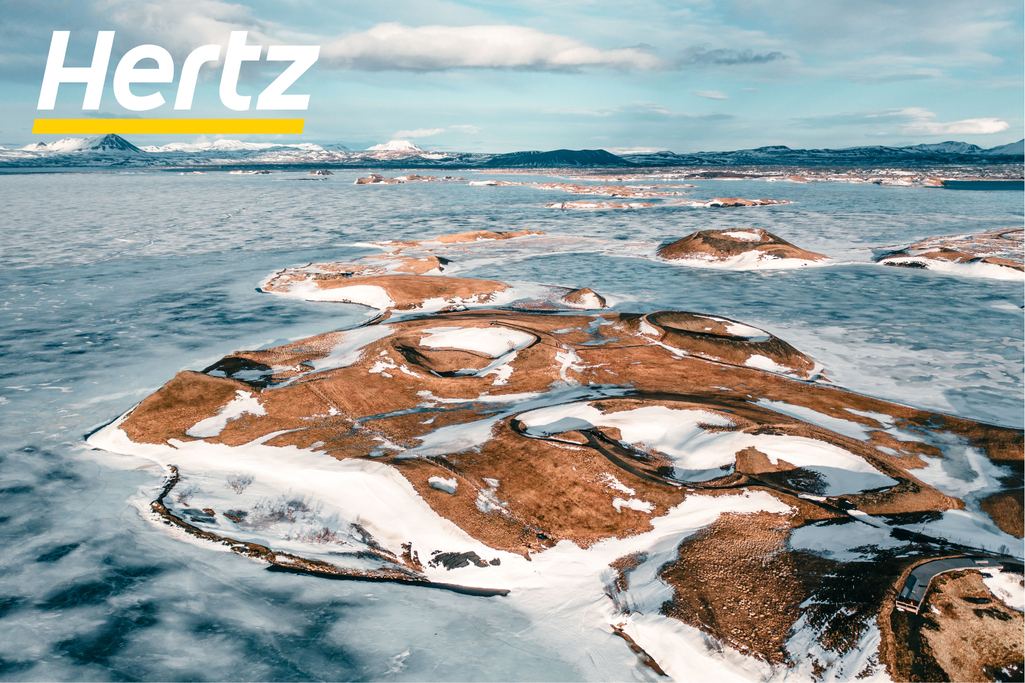
FAQs
-
- Is Iceland expensive in March?
Yes, Iceland is always on the pricier side compared to many destinations, but March falls into the shoulder season. That means flights, hotels, and even tours are generally cheaper than in the busy summer months. You’ll still want to budget carefully for food and activities, but overall March is more affordable than peak season.
- Is Iceland expensive in March?
-
- Are the roads open in Iceland in March?
Most main roads, including the Golden Circle and the Ring Road, remain open and regularly cleared of snow. However, the Highlands and all F-roads are closed until summer, and certain mountain passes or routes in the Westfjords and Eastfjords may be difficult or closed after heavy snowfall. Always check road.is for current updates before heading out.
- Are the roads open in Iceland in March?
-
- What time does it get dark in Iceland in March?
At the start of March, the sun sets around 7:30 pm, and by the end of the month, closer to 8:30–9:00 pm. Sunrise shifts from about 8:30 am at the beginning of the month to 6:45 am by the end. In other words, you’ll have 10 to 13 hours of daylight, with long, dark evenings still perfect for northern lights viewing.
- What time does it get dark in Iceland in March?
-
- Is it difficult to drive in Iceland in March?
Driving in March can be challenging if you’re not used to winter conditions. Snow, ice, and strong winds are still common, especially outside the south and west. With a 4×4 vehicle, slower speeds, and by keeping an eye on forecasts, it’s very doable. The longer daylight hours also make it easier and safer than in deep winter months like January or February.
- Is it difficult to drive in Iceland in March?
-
- Are waterfalls frozen in Iceland in March?
Most of Iceland’s major waterfalls, like Gullfoss, Skógafoss, and Seljalandsfoss, continue to flow year-round. In March, you may see icy formations along their edges, adding to the atmosphere and photo opportunities. Smaller falls in colder regions may freeze partially, but you’ll still find plenty of dramatic cascades at full strength.
- Are waterfalls frozen in Iceland in March?
-
- Is the Blue Lagoon in Iceland open in March?
Yes, the Blue Lagoon and other major geothermal baths, such as the Sky Lagoon and Mývatn Nature Baths, are open year-round. In fact, many visitors say March is one of the best times to visit, as soaking in the warm water while surrounded by snow creates a uniquely Icelandic experience.
- Is the Blue Lagoon in Iceland open in March?
-
- Is Iceland snowy in March?
Yes, snow is still common in March, especially in northern and eastern regions, but it’s less intense than in mid-winter. Reykjavík and the South Coast often experience a mix of snow, rain, and clear days. Expect wintry conditions, but also signs of spring starting to break through by the end of the month.
- Is Iceland snowy in March?
Iceland in March
A self-drive travel experience to Iceland in March is one of the best times to enjoy all of Iceland’s best attractions without a huge volume of tourist traffic. Since March is during the off-season, tours will be more accessible, and flight and hotel prices are cheaper than other times in the year. On top of that, you can take part in activities that are only available in the winter, but without having to brave the harshest conditions.
Before you visit, make sure to book your rental car with Hertz Iceland online and in advance to ensure that you get the perfect vehicle suited to your group. And with a pickup location right in the airport arrivals hall, you can begin you March in Iceland adventure right away!

